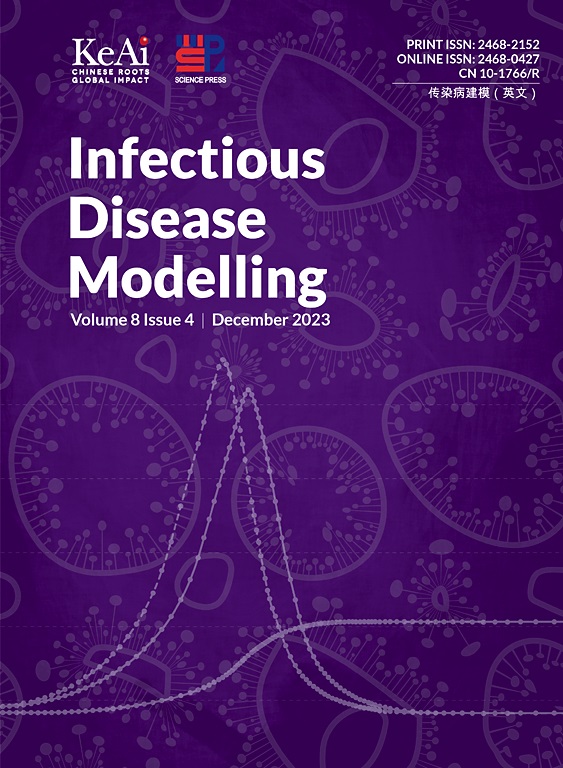传染病监测数据的状态空间建模:随机模拟技术和结构变化检测
IF 2.5
3区 医学
Q1 Medicine
引用次数: 0
摘要
我们对状态空间模型的先进随机模拟技术进行了探索,特别关注它们在传染病建模中的应用。利用来自加拿大安大略省的COVID-19监测数据,我们采用马尔可夫链蒙特卡罗(MCMC)和顺序蒙特卡罗(SMC)方法来检测病例数的结构变化并预测未来趋势。我们的方法始于卡尔曼平滑技术的应用,结合MCMC在局部水平和季节模型中进行状态采样,以及非线性动态回归模型的贝叶斯推断。然后,我们评估了各种先验的有效性,包括正态分布、学生t分布、拉普拉斯分布和马蹄形分布,使用Rao-Blackwellized粒子滤波器捕获数据中的突变。我们的研究结果突出了马蹄铁在识别变化点和适应复杂数据结构方面的优越性能,为公共卫生的实时监测和预测提供了有价值的见解。本研究强调了状态空间模型的有效性,特别是当与复杂的先验分布增强时,在提供对传染病传播的细微理解方面。本文章由计算机程序翻译,如有差异,请以英文原文为准。

State-space modelling for infectious disease surveillance data: Stochastic simulation techniques and structural change detection
We present an exploration of advanced stochastic simulation techniques for state-space models, with a specific focus on their applications in infectious disease modelling. Utilizing COVID-19 surveillance data from the province of Ontario, Canada, we employ Markov Chain Monte Carlo (MCMC) and Sequential Monte Carlo (SMC) methods to detect structural changes and pre-dict future trends in case counts. Our approach begins with the application of a Kalman smoothing technique, integrated with MCMC for state sampling within local level and seasonal models, alongside Bayesian inference for non-linear dynamic regression models. We then assess the effectiveness of various priors, including normal, Student's t, Laplace, and horseshoe distributions, in capturing abrupt changes within the data using a Rao-Blackwellized par-ticle filter. Our findings highlight the superior performance of the horseshoe prior in identifying change points and adapting to complex data structures, offering valuable insights for real-time monitoring and forecasting in public health. This study emphasizes the efficacy of state-space models, particu-larly when enhanced with sophisticated prior distributions, in providing a nuanced understanding of infectious disease transmission.
求助全文
通过发布文献求助,成功后即可免费获取论文全文。
去求助
来源期刊

Infectious Disease Modelling
Mathematics-Applied Mathematics
CiteScore
17.00
自引率
3.40%
发文量
73
审稿时长
17 weeks
期刊介绍:
Infectious Disease Modelling is an open access journal that undergoes peer-review. Its main objective is to facilitate research that combines mathematical modelling, retrieval and analysis of infection disease data, and public health decision support. The journal actively encourages original research that improves this interface, as well as review articles that highlight innovative methodologies relevant to data collection, informatics, and policy making in the field of public health.
 求助内容:
求助内容: 应助结果提醒方式:
应助结果提醒方式:


